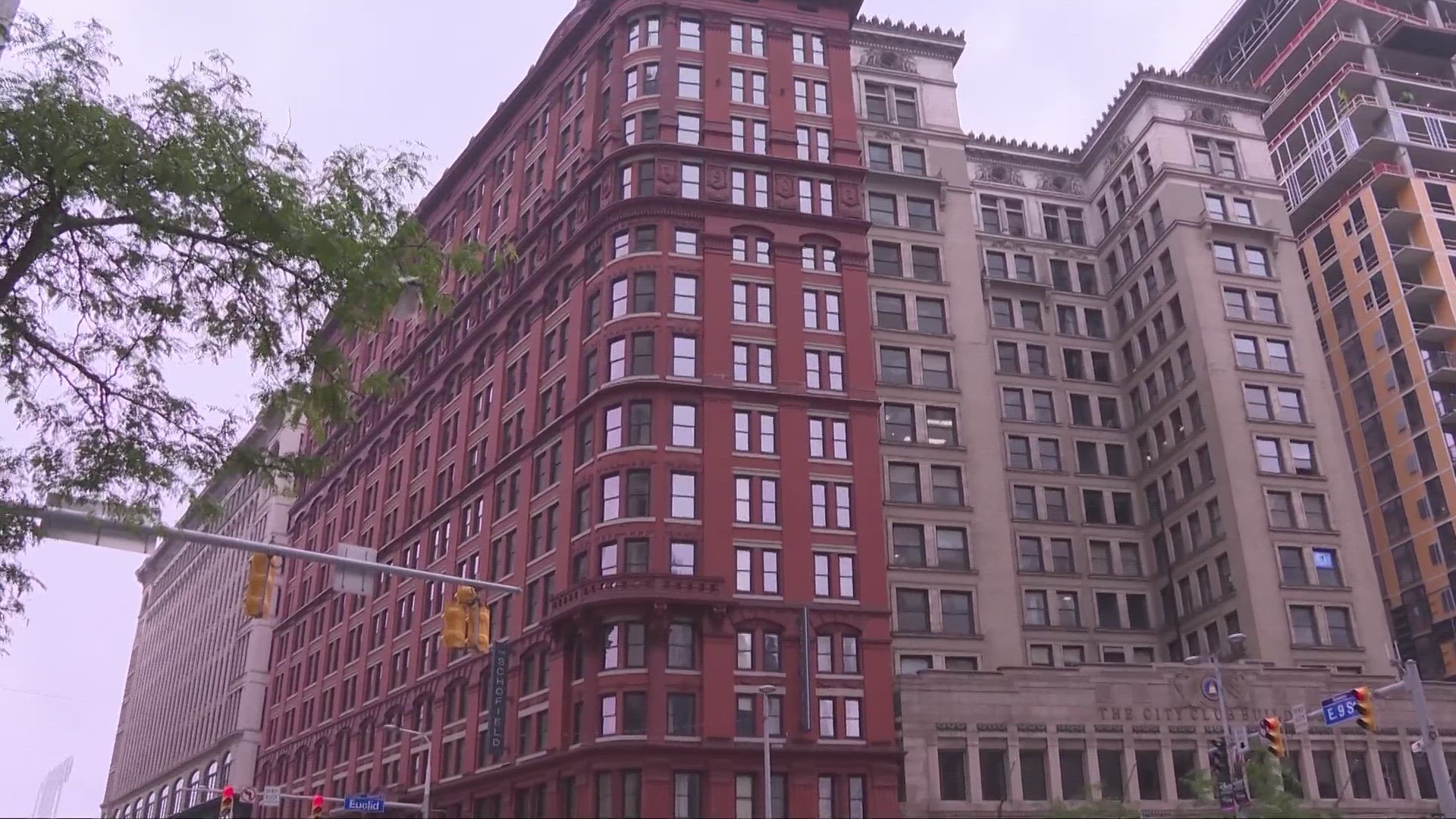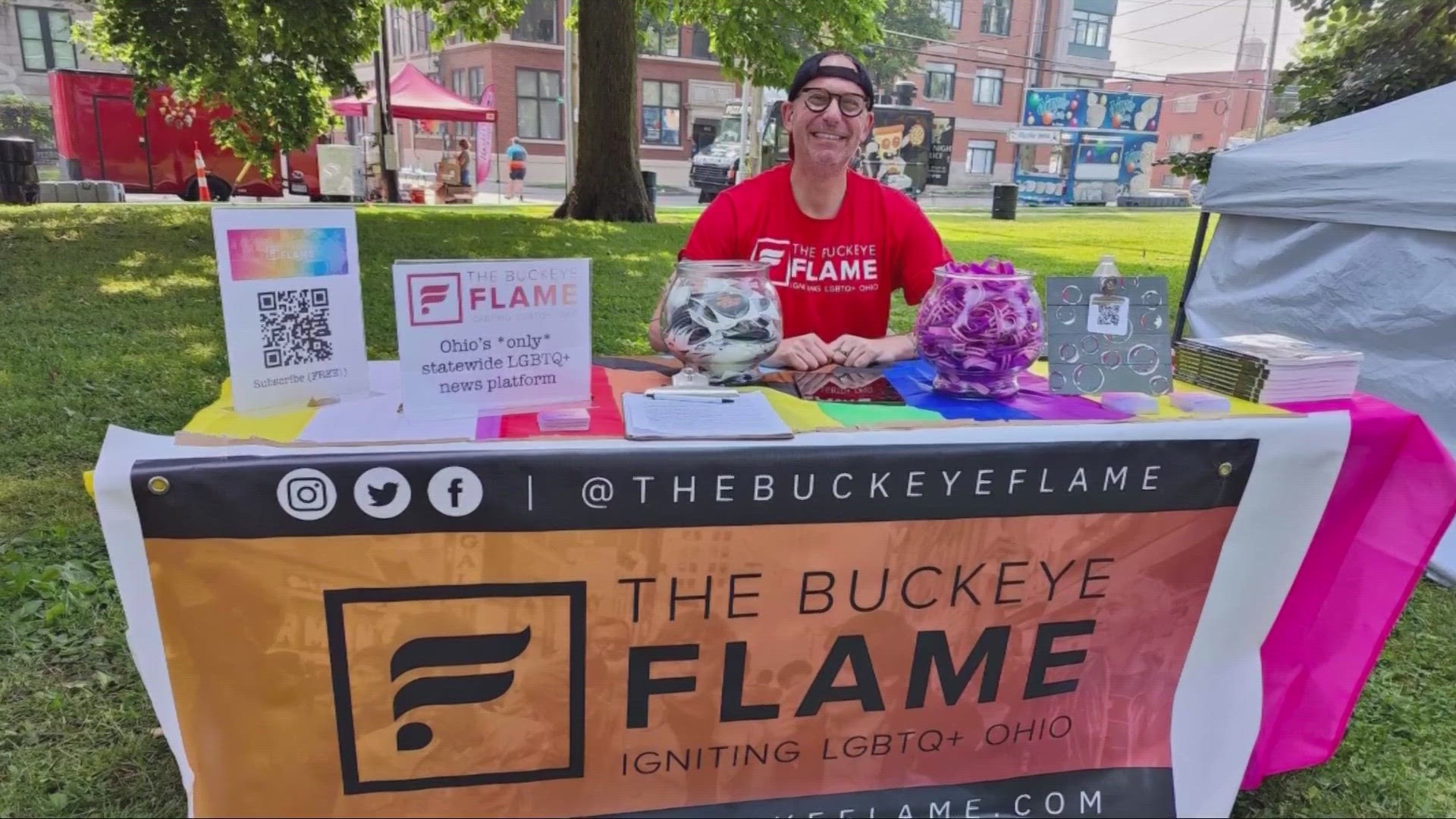CLEVELAND — The Schofield Building in downtown Cleveland is a constant hub of activity. Home to residences, The Kimpton Schofield Hotel, and restaurant Betts, the middle of it all is exactly where the Kimpton team wants to be.
"We are on the corner of East 9th and Euclid in the middle of downtown Cleveland. We like to call it the corner of Main and Main. It's where all the fun stuff happens,” the hotel's "Ambassador of Awesome," Nicole Bakker said. "We want it to be a place where people want to go to gather and be happy.”
The hotel opened in 2016, but the building it’s housed in has been around much longer - it was completed in 1902, the vision of architect Levi Schofield, who still influences the mission of the space today.
"People have always come here to have a good time and to socialize and to feel welcome," Bakker said. "And [Schofield] wanted that. That's why he did all the entertaining upstairs with his wife. And then when the lounge was here, it was the same thing.”
That's The Cadillac Lounge to be precise -- one of Cleveland's first gay bars.
It’s a place historian and Case Western Reserve University Professor John Grabowski and B.A. Candidate in History, Sidney Negron, have studied extensively.
"I mean, if the site could talk we'd have the best oral history we could ever find," Grabowski said.
Opened in 1946 by a woman named Gloria Lenihan, the upscale lounge served straight clients during the day and gay men at night. As Negron points out, it was an important space for the gay community during a very different time.
"It catered to a lot of businessmen during the day and in the evenings it was still very formal. In order to enter, you needed to be wearing a shirt tie and a jacket, and it was really more of a tolerance of the gay community than a kind of full fledged acceptance."
While Grabowski and Negron don’t have any photos of the interior of the bar, they believe it would have sat inside the current Betts restaurant on East 9th.
"It was two stories high," Grabowski said. "It had a rich decor, it had incredible murals by a Cleveland muralist, and it had sort of a south sea theme, something that was really kind of chic in the 1940s and 1950s.”
"This whole place was outfitted with these red velvet booths and this wood paneling and mirrors to make the space look bigger," Negron added.
While the bar was a popular spot for gay men to gather, Negron points out, it wasn’t without its risks, or rules.
"Men were expected to be at least 12 inches apart from each other at all times," they said. "There wasn't really a lot of standing or dancing. There wasn't really the ability to move your own drink to go sit next to somebody and meet them or introduce yourselves in order to avoid potential accusations of indecency or potential arrests from the vice squads, which operated here."
But Negron points out that those limitations served as a catalyst for organization and resistance in Cleveland's gay community, and a reminder that LGBTQ+ lives existed long before events like Stonewall, or The Cadillac Lounge.
"Gay men were very aware of the kind of policing and harassment possible in bars," said Negron. "They were aware that they could be arrested and jailed and potentially lose their jobs if that got out, but they found ways to kind of organize themselves to resist that."
"The fact that the space is here and it's remembered and it's celebrated, I think is something that should lead people to ask other questions about the community at that time,” Grabowski added.
While the history of this particular piece of LGBTQ+ history remains an important one, Grabowski and Negron pointed out that the story of this bar doesn’t necessarily touch on the stories of people who are trans, lesbians, or people of color.
The lounge closed in the 1970s when Grabwoski says Lenihan wanted to move the bar to a new location on Prospect Avenue, but faced pushback from a city council person over proximity to religious institutions.
"I think in a way, even though it is not what it used to be, it's a physical touchstone to a time in history, and it reflects on one cadre of people in the LGBTQ community," said Grabowski. "But that physicality, the fact that the space is here and it's remembered and it's celebrated, I think something that should lead people to ask other questions about the community at that time."
While The Cadillac Lounge no longer stands, its historic significance and cultural impact are things the Kimpton Schofield still recognizes today, and hopes to celebrate during Pride month. Through June, the restaurant, Betts, will have different Pride cocktails, and the proceeds will be donated to the Trevor Projects.
"I think it's really important to grasp the individuality of everyone that comes through the doors, whether they're employees or guests," said Mikey McAllen with the Kimpton Schofield. "I think it just helps make the genuine connection that everyone feels and everyone can take part in and be proud of."


